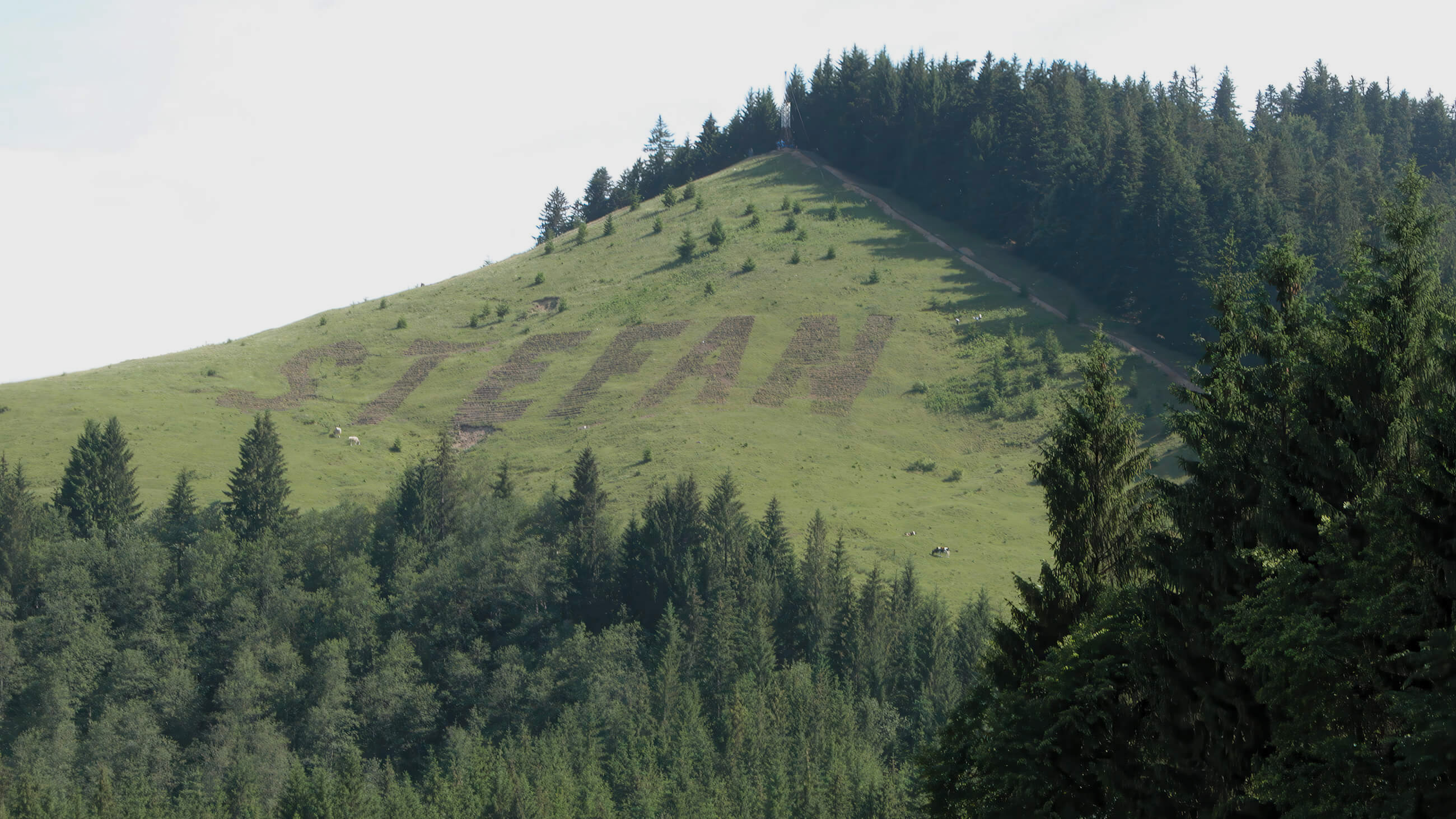It is written in a chronicle that the Victory of Baia “was the thought of God with Stephen Voivode.” Likewise, the raising of the monastery here was a thought of God, to which Saint Stephen obeyed.
According to centuries‑old tradition, the Holy Altar was raised where once stood the tree pierced by Saint Stephen the Great’s arrow drawn from the high hill near the monastery, the Cross Hill: “Voivode Stephen the Good, when he decided to build Putna Monastery, fired with a bow from a mountain peak nigh the monastery.”

Presently, a fragment of the tree is displayed in the monastery’s museum. The fragment was preserved until the 1960s in the altar, being the support of the Crucifix of our Savior Jesus Christ. Just as the Church is founded on the sacrifice of the Savior Christ, a sacrifice made of obedience and love to God the Father, so is the entire history of Putna Monastery based on the voivode’s founding gesture.
Archaeological excavations from the 1980s confirmed that the monastery was built on an eremitical hearth. Sixty centimeters below the foundation of the Princely House, the earthly remains of five hermits were discovered. They were honey‑colored and pleasant to the eye. Since it was the communist era, they were secretly buried in the cemetery of the monastery. The raising of the edifice without the removal of the graves shows that the burial place of these hermits was not known during Saint Stephen’s reign, which means that they had lived there for at least a few decades before construction began.
Choosing the site
On this eremitical hearth, the heavenly Father charged Saint Stephen the Great with building the walls of a monastery, his first holy place of worship and the chosen site for his necropolis. Putna was called by his contemporaries “his dear monastery” for the voivode truly loved this edifice. Due to its importance, over the centuries it would be called “head of all monasteries of Moldavia.”
The foundation stone was laid by Saint Stephen on July 10, 1466. Three years later, the church was ready, and the consecration service took place on Sunday, the 3rd of September 1469.
The “Chronicle of Moldavia” shows that the event took place after a victory against the Tatars in Lipnic. Stephen the Great “returned victorious and came to consecrate the church dedicated to the Most Holy Mother of God, with the help of God and by the hand of His Eminence Metropolitan Theoctistus and of Bishop Tarasius and with the abbots of all the monasteries. And at the Divine Liturgy there were bishops and priests and deacons, on the 3rd of September, under Archimandrite Josaphat.”
For the day of consecration, Saint Stephen intentionally chose the third of September, when Saint Theoctistus is celebrated. That was the birthdate of Metropolitan Theoctistus of Moldavia, as well, so Saint Stephen showed his great appreciation and gratitude to him by selecting this date.
The synaxis of 64 serving clergy, a great number even by today’s measure, also shows how important the monastery was to the prince and his nation.
The first monks came to Putna from Neamț Monastery, and they were headed by their abbot, Archimandrite Josaphat, who became abbot of Putna as well. Some names of those who came were pre‑ served: Hieromonks Joannicius and Macarius; Hierodeacon Theodore; Monks Anastasius, Mishael, Nikon, Callistratus, Joel, and Martyrius. Thus, the leaven taken from the country’s oldest royal monastery and brought to Putna would greatly multiply and serve the people on their path to God here as well.








